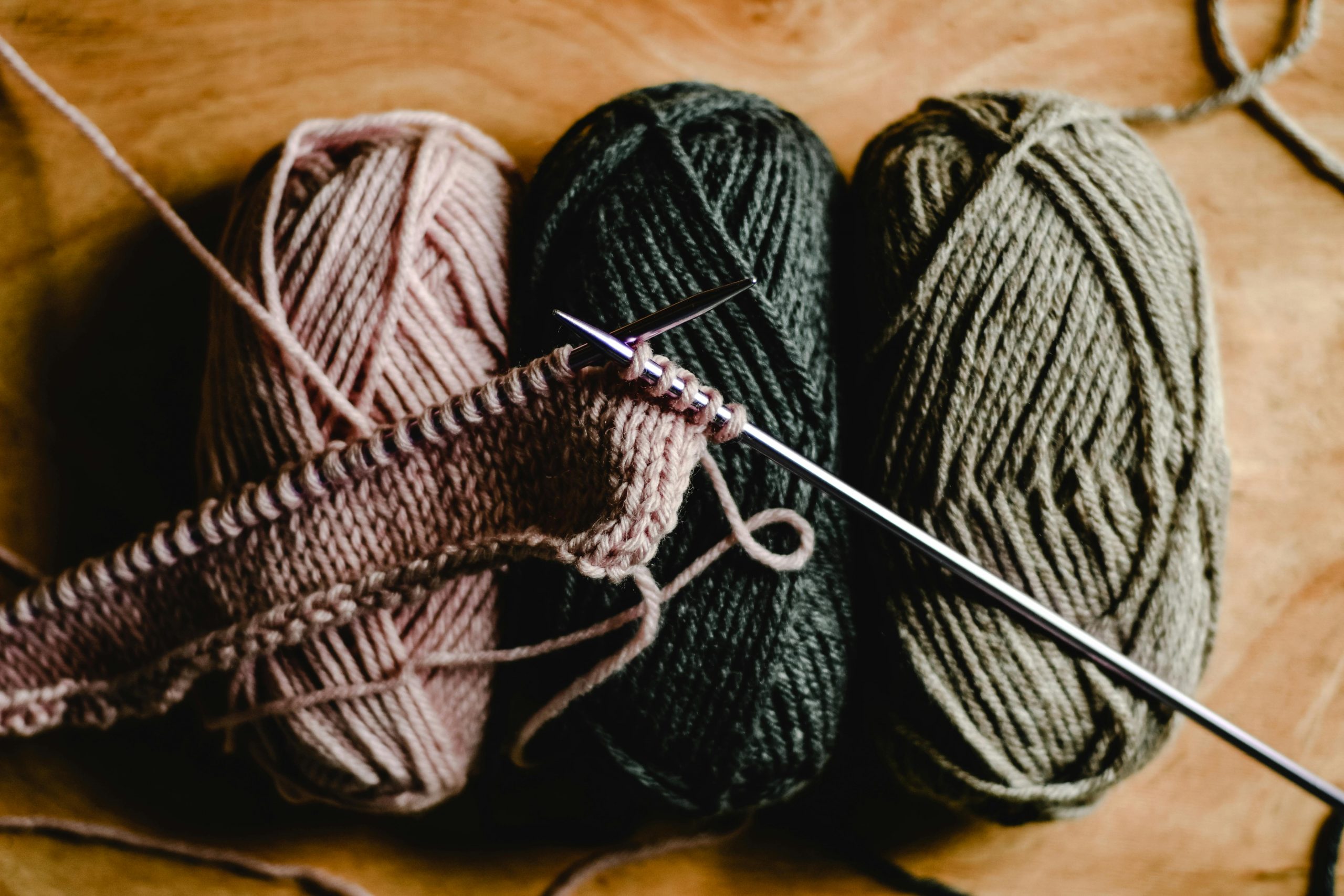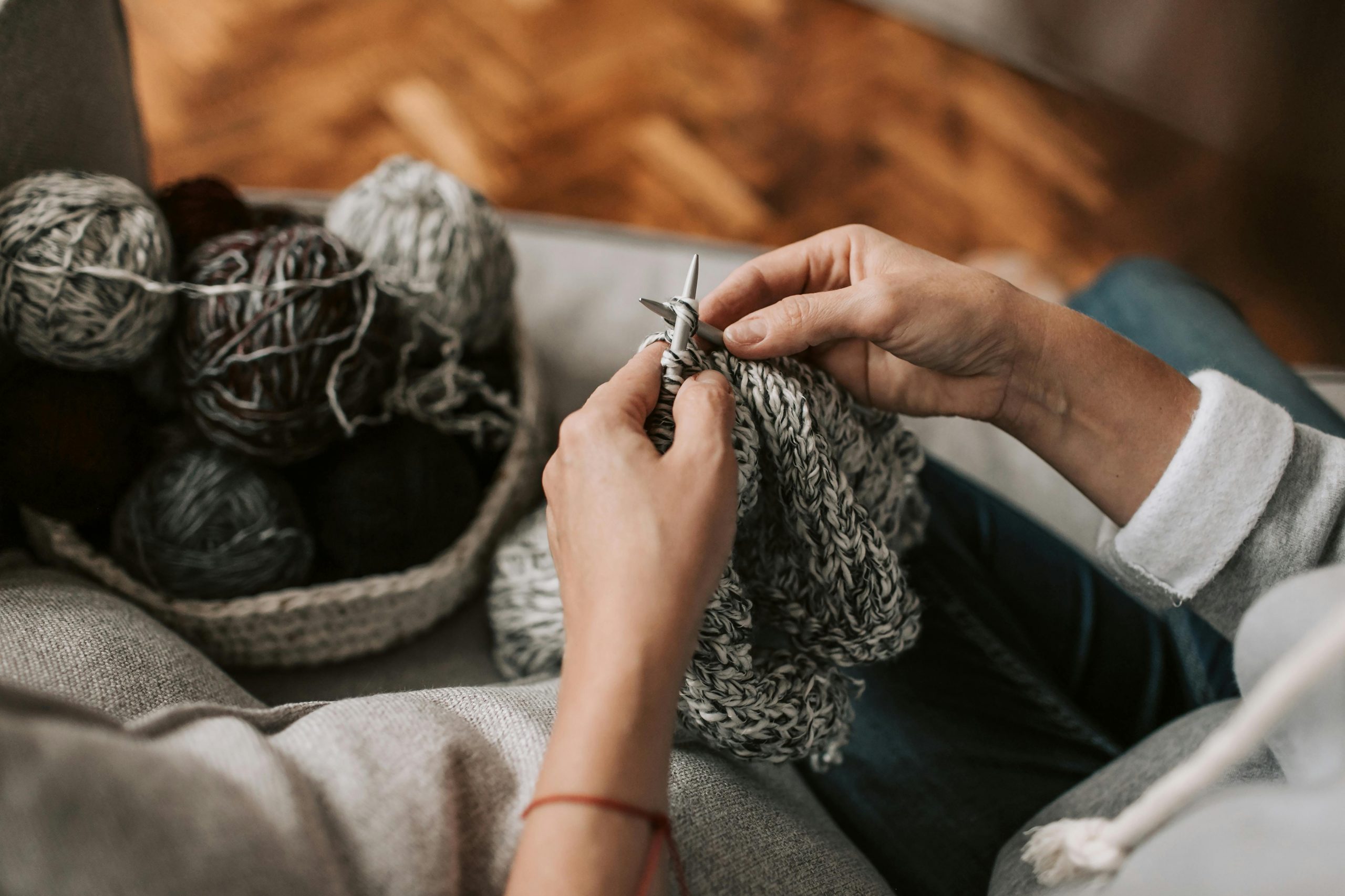So, you want to learn how to knit a blanket? Whether you’re looking to create something snuggly for yourself or a heartfelt handmade gift, a knitted blanket is a perfect beginner project. It’s big, yes—but it’s also forgiving, relaxing, and incredibly rewarding.
In this guide, we’ll walk you through everything you need to know about knitting a blanket from scratch—even if you’ve never held knitting needles before. Let’s get into it.
Why Start with a Blanket?
Blankets are ideal beginner projects for a few reasons:
- No shaping required: Unlike sweaters or hats, you won’t need to worry about increases or decreases.
- Repetitive stitches: You’ll get the hang of basic stitches quickly through repetition.
- Room for error: A small mistake in a large blanket often goes unnoticed.
- Functional and cozy: Everyone loves a handmade throw blanket.
What Supplies Do You Need to Knit a Blanket?

Before you get started, gather your supplies. For beginners, simplicity is key.
1. Yarn
Look for:
- Bulky or super bulky yarn (category 5 or 6) – It works up quickly and is easier to manage.
- Soft, non-scratchy material – Acrylic or a cotton blend is beginner-friendly and machine washable.
- Light colors – Easier to see stitches than dark shades.
Recommended amount: For a lap-sized throw, you’ll need about 900–1,200 yards of bulky yarn.
2. Needles
- Circular knitting needles with a long cord (at least 32 inches) are best, even if you’re knitting flat. They help hold the weight of the blanket.
- Size US 13 to US 17 (9 mm to 12 mm) is ideal for bulky yarn.
3. Other Tools
- Scissors
- Tapestry needle (for weaving in ends)
- Stitch markers (optional)
Which Stitch Is Best for a Beginner Blanket?
If this is your first knitting project, go with a basic stitch that helps you build muscle memory and confidence. Below are three solid options to consider, each with its own texture and style.
1. Garter Stitch (knit every row)
When it comes to knitting for beginners, the garter stitch is one of the easiest and most reliable stitches. It’s created by simply knitting every row, which results in a squishy, ridged fabric that lays flat without curling. Because of its simplicity and steady rhythm, it’s the go-to stitch for most beginner blankets.
2. Stockinette Stitch (knit one row, purl the next)
The stockinette stitch is a step up in terms of technique, alternating between knit rows and purl rows. It gives you a smooth, clean surface on the front of the blanket and a textured, bumpy look on the back. Keep in mind that this stitch naturally curls at the edges, so many knitters add a garter stitch or ribbed border to keep it neat.
3. Ribbing (like knit 2, purl 2)
Ribbing alternates between knit and purl stitches in the same row—commonly knit two, purl two. It’s often used for borders, but you can also knit an entire blanket this way. The resulting fabric has stretch, structure, and a pleasing texture that holds its shape well.
Tip: Most beginners start with garter stitch because it’s repetitive and easy to correct if you make a mistake.
How Big Should Your Blanket Be?
Blankets come in different sizes depending on their purpose. Here’s a quick size guide:
| Type | Approx. Dimensions |
| Baby blanket | 30″ x 40″ |
| Lap throw | 40″ x 60″ |
| Twin bed | 66″ x 90″ |
| Queen bed | 90″ x 90″ |
| King bed | 108″ x 90″ |
Start with a lap throw or baby blanket—big enough to be cozy, small enough not to overwhelm you.
How Many Stitches Do You Cast On?
To find the right number of stitches:
- Knit a gauge swatch: Cast on 10 stitches and knit about 4 inches.
- Measure how many stitches per inch you knit (e.g., 2 stitches per inch).
- Multiply that number by your desired width.
For example: If you want a 40-inch-wide blanket and you knit 2 stitches per inch: 2 x 40 = 80 stitches to cast on.
Pro tip: Always add a few extra stitches (4–6) to make room for a border.
Step-by-Step: How to Knit a Blanket

Let’s break this down into simple steps.
Step 1: Cast On
Using your chosen cast-on method (the long-tail cast-on is a beginner favorite), cast on your calculated number of stitches.
Step 2: Knit Your Blanket
- Garter Stitch? Knit every stitch, every row.
- Want a border? Knit the first 4–6 stitches and last 4–6 stitches of each row in garter stitch, and do stockinette in the center.
Keep knitting row after row. You’ll quickly get into a rhythm.
Step 3: Bind Off
Once your blanket reaches your desired length:
- Knit two stitches.
- Use your left needle to pull the first stitch over the second.
- Knit one more, and repeat until only one stitch remains.
- Cut the yarn and pull it through the final loop.
Step 4: Weave in Ends
Thread your yarn tail onto a tapestry needle and weave it into the back of your work for a clean finish.
How Long Does It Take to Knit a Blanket?
It depends on:
- Yarn weight and needle size: Bulky yarn + big needles = faster progress.
- Blanket size: A baby blanket might take a few days; a king-size could take weeks.
- Your pace: Some knit for an hour a day, others binge-knit over a weekend.
A bulky yarn lap blanket usually takes about 10–15 hours total.
Common Beginner Questions
What if I Drop a Stitch?
Don’t panic—it happens. Use a crochet hook or spare knitting needle to gently pull the stitch back up through the rows.
Can I Use Straight Needles?
Technically, yes—but they can get heavy. Circular needles distribute the weight better and are easier on your hands and wrists.
What’s the Best Yarn for a Soft Blanket?
Look for yarn labeled as “super soft,” “baby yarn,” or blends with acrylic and cotton. Stay away from scratchy wool or novelty yarns for your first go.
Can I Knit in Panels?
Absolutely. Knit smaller rectangles or squares, then sew or crochet them together. This method is great for portability.
Tips for Knitting Success
- Start small – A lap blanket or baby blanket keeps things manageable.
- Pick forgiving yarn – Light-colored, chunky yarn helps you see your stitches.
- Practice tension – Try to keep your yarn relaxed but consistent.
- Take breaks – Don’t overdo it; stretch your hands and shoulders.
- Keep your first project – Even with flaws, it’ll be a great memory of where you started.
Ready to Knit Your First Blanket?
Knitting a blanket might feel like a big project, but it’s perfect for beginners. With just one or two basic stitches, the right materials, and a little patience, you’ll have something warm and wonderful to show off. It’s a calming, creative hobby—and at the end of it, you get to curl up under your own handmade blanket. That’s a win-win.
